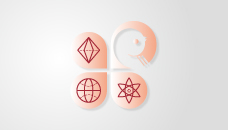LUO Zhe, HUANG Dunwen, PENG Hui. Alkali-Aggregate Reaction Mechanism of Alkali-Activated Metakaolin-Slag Mortar[J]. Bulletin of the Chinese Ceramic Society, 2023, 42(8): 2830
Search by keywords or author
- Bulletin of the Chinese Ceramic Society
- Vol. 42, Issue 8, 2830 (2023)
Abstract

Set citation alerts for the article
Please enter your email address



